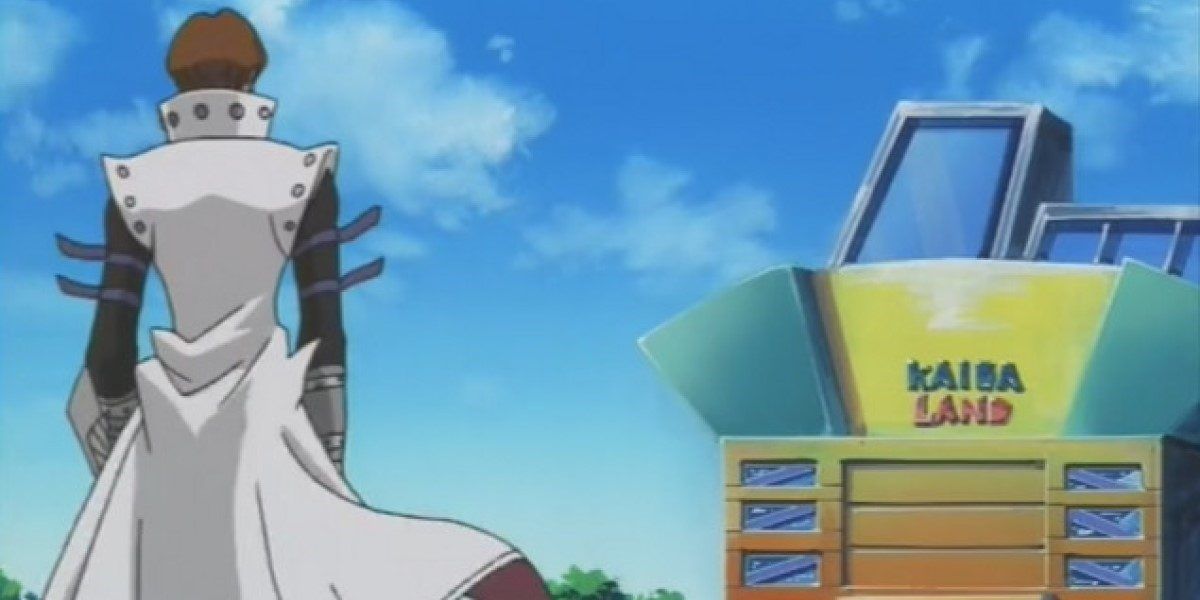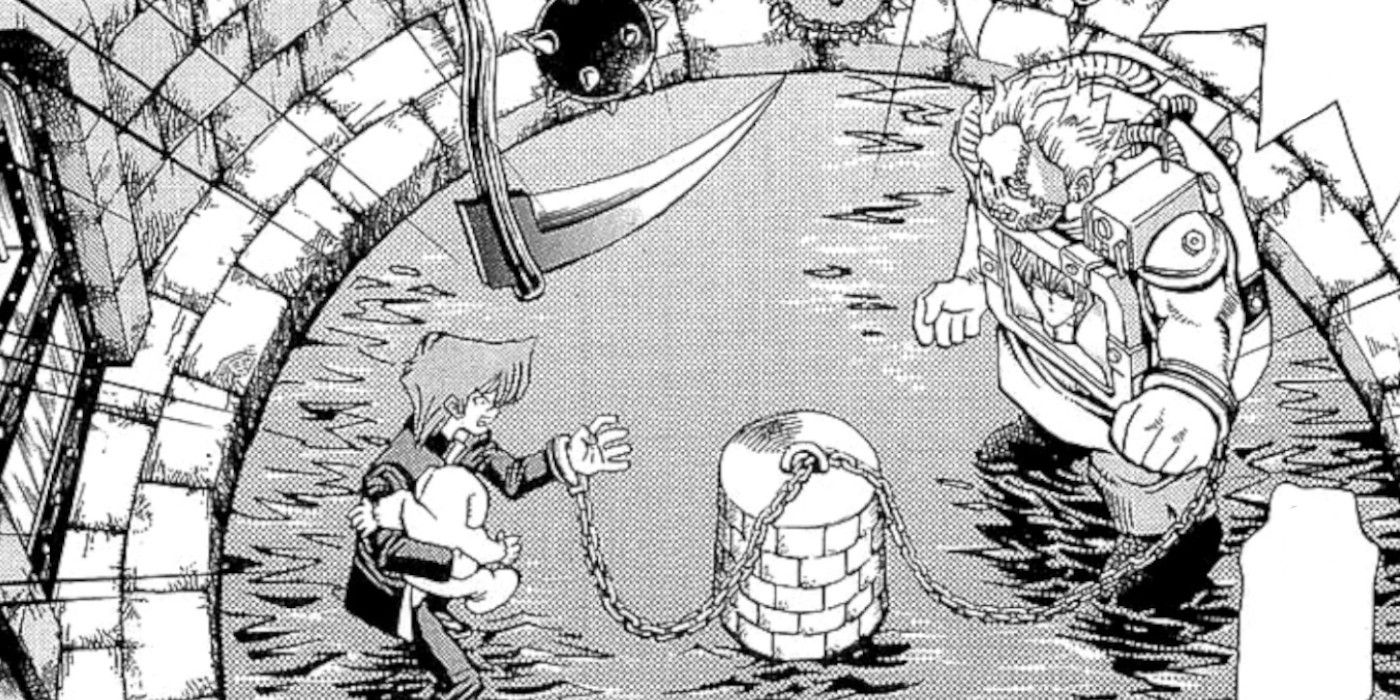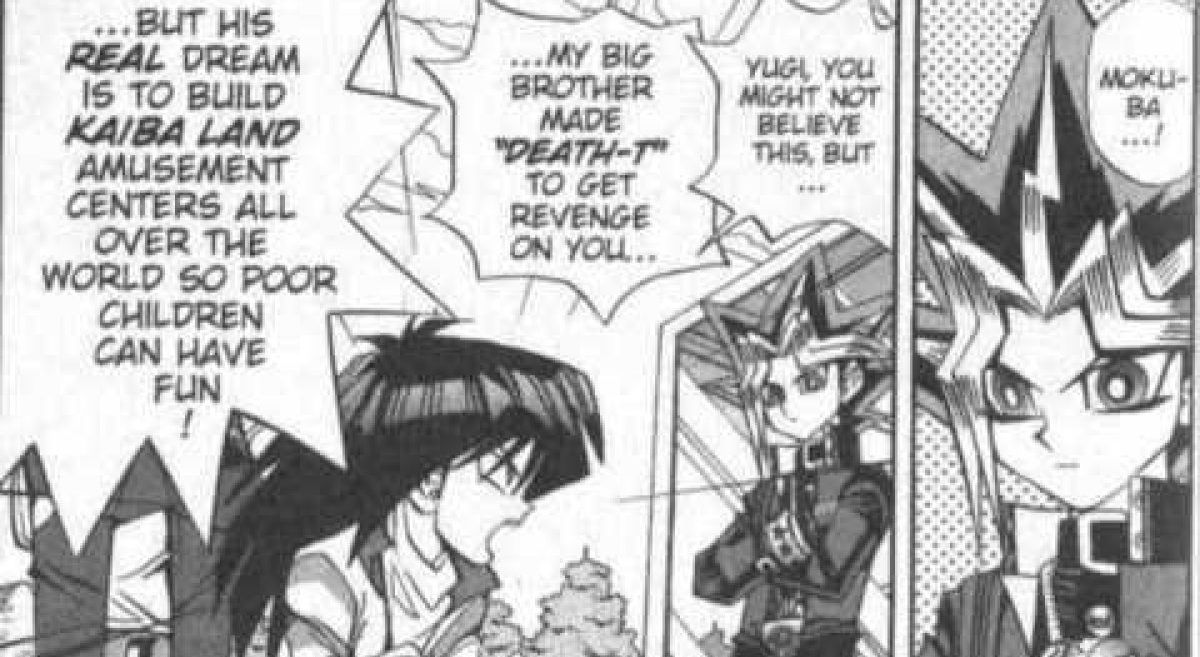Yu-Gi-Oh's Seto Kaiba is not one for subtlety. Kaiba is the king of creating massive, expensive and impractical evil schemes. But, the single most ludicrous one of these plans has to be Kaiba Land and Death-T. Death-T is the second arc of the Yu-Gi-Oh manga and was also adapted as part of the original Toei anime.
After Kaiba fails to steal Yugi's Blue-Eyes White Dragon card, Yugi's alter-ego Yami Yugi emerges and defeats Kaiba in a Shadow Game. Once the battle is over, Yami Yugi traps Kaiba in a delusion where he is repeatedly murdered by Duel Monsters. Kaiba, rightfully traumatized by this event, plots his revenge. He builds a theme park called Kaiba Land, and then spends 10-billion yen to build another theme park inside of Kaiba Land: Death-T.
The Death-T "park" had five floors of deadly games. Kaiba's aim was to make Yugi feel what he felt during the penalty game using a combination of torture, terror and his newly created 3D projection technology. Kaiba invited Yugi and his friends to the grand opening of Kaiba Land and Yugi, in a stunning display of either forgiveness or abject stupidity, accepted the invitation.
The next day, Kaiba unveils his plans. Kaiba makes Yugi watch as he duels his grandfather, who loses to Kaiba and, as a punishment, Kaiba makes him endure a simulated version of the same punishment game Yugi inflicted on him. Kaiba then informs Yugi that if he competes in Death-T, his grandfather will be released. Yugi, seeing no way out of this situation, agrees.
What follows is a collection of increasingly ludicrous death games. The first game sees Yugi and his friends compete in a deadly version of laser tag against three hitmen. Next comes a ghost train with a twist. Each rider is hooked up to an electric chair and, if they scream, they'll be given a fatal electric shock. Kaiba's butler, the creator of this floor, actually decides to take part in the game, thinking that as he created the scares, he would be immune to them. However, his plan falls apart as Johji, the young friend of one of Yugi's associates, climbs out of his seat and defecates on the butler, causing him to scream.
Kaiba's next game involves Yugi's group putting their hands into holes in the walls. These holes restrain the group, forcing them to quickly work out how to escape before a concealed guillotine slices them in half. Yugi, being an expert at puzzles in this version of the story, quickly figures out the problem and leads his friends to safety, only to encounter the Chopman. Chopman is basically Leatherface and Jason Voorhees' legally distinct cousin, a hulking serial killer who wears a strange mask and is said to have murdered a lot of people at a local summer camp. Unfortunately, it is never explained why he agreed to hang out in Kaiba's theme park. Chopman's game was meant to be a fight to the death, but he got his chainsaw stuck in a wall, giving the others time to escape.
Kaiba then traps the group in a giant game of Tetris, forcing them to quickly climb up a series of falling blocks before they end up crushed. However, Yugi easily overcomes this challenge. After all of that weirdness, the last two floors were surprisingly sane. First Yugi defeats Kaiba's brother Mokuba in a game of Capsule Monster Chess and then goes on to defeat Kaiba in a traditional game of Duel Monsters, as you do. When Kaiba loses, Yami Yugi Mind Crushes him, sending Kaiba into a coma until he repairs his heart and purges his evil side.
Overall Kaiba Land was, like so many of Kaiba's plans, a very expensive and utterly absurd scheme that completely failed in its main goal. It makes you wonder if Kaiba would have been better off just running the theme park like a normal theme park, as it seems that they're a great way of making your multinational corporation into a global powerhouse. Just ask Disney.




